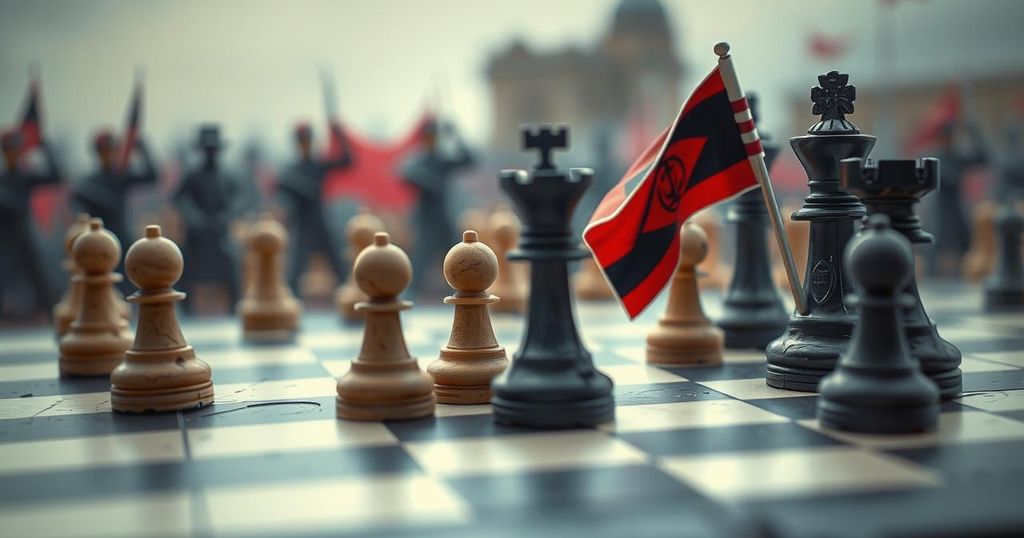Wagner Group: The Mercenary Force Behind Russian Military Operations

The Wagner Group, a Russian mercenary organization, operates globally under state auspices, with deep connections to military intelligence. Founded by Prigozhin and Utkin in 2014, Wagner has been involved in significant conflicts in Ukraine, Syria, and Africa, often accompanying resource exploitation and alleged war crimes. The group’s influence surged during the Ukraine invasion, culminating in a mutiny against the Russian government in 2023. Following Prigozhin’s death, the group’s future remains uncertain.
The Wagner Group, officially known as PMC Wagner, is a Russian mercenary organization engaged in military operations globally under the aegis of the Russian government. Despite the illegality of private military companies in Russia, extensive links between Wagner and Russian military intelligence have been acknowledged, with President Vladimir Putin confirming the state’s support for Wagner’s operations. Yevgeny Prigozhin, an oligarch with a controversial past, has been pivotal in Wagner’s development and operations.
Geographically, Wagner’s activities began in response to the Ukrainian crisis in 2014, expanding from Ukraine to regions like Syria and several African nations. The group was established in 2014 with Dmitry Utkin as commander and Prigozhin as funding director. The mercenaries supported Russian interests while helping local governments retain power, often engaging in resource exploitation.
The mercenary group gained notoriety for alleged war crimes. In regions such as Mali and the Central African Republic, Wagner fighters were involved in mass killings and human rights violations while securing lucrative mineral mining contracts. Their involvement frequently coincided with local government conflicts, showcasing their dual military and economic roles.
During the Syrian Civil War, Wagner fighters bolstered the Assad regime, engaging in high-profile battles against U.S. forces, notably in the Battle of Conoco Fields. A significant confrontation in February 2018 resulted in hundreds of Wagner casualties, highlighting the risks associated with their operations and the complexities of the conflict involving multiple international actors.
Wagner’s role in the ongoing Ukraine conflict grew significantly after the full-scale invasion in February 2022. Initially comprising around 5,000 members, Prigozhin’s recruitment efforts expanded its ranks to over 50,000, primarily utilizing convicts. They were instrumental in the protracted battles in eastern Ukraine, particularly in Bakhmut, leading to substantial casualties on both sides despite claiming tactical victories.
In June 2023, internal conflicts culminated in a rebellion against the Russian Defense Ministry, led by Prigozhin. Wagner forces marched towards Moscow, occupied military facilities, and engaged Russian military units before withdrawing under a brokered agreement that promised them amnesty and future contracts. This rebellion raised questions about Putin’s strategy and the future of the Wagner Group, particularly after the mysterious death of both Prigozhin and Utkin in a plane crash later that year.
The Wagner Group emerged amidst the chaotic geopolitical landscape following the collapse of the Soviet Union, with former military officers leveraging private military contracts. The group particularly capitalized on Russia’s foreign operations to reinforce its military objectives abroad. Characterized by a decentralized structure and ambiguous affiliations, Wagner has thus operated in a sphere where both the Russian government and international law collide, raising ethical concerns regarding private military forces.
The Wagner Group remains a contentious symbol of Russia’s covert military strategies. Its evolution from a marginal entity to a significant player in global conflicts emphasizes the challenges of accountability in modern warfare. The dissolution of leadership following Prigozhin’s death poses questions about the future of such mercenary enterprises and their impact on international relations and human rights.
Original Source: www.britannica.com







